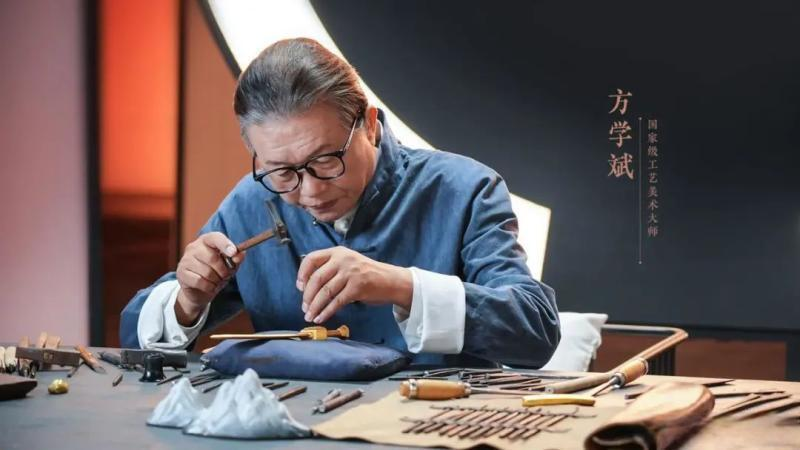
Fang Xuebin
Representative inheritor of Yangzhou Gold and Silver Fine Craftsmanship Project, a national intangible cultural heritage
Senior Craftsman
Jiangsu Province Arts and Crafts Celebrities
Master of Arts and Crafts in Jiangsu Province
Vice Chairman of Jiangdu District Arts and Crafts Artists Association, Yangzhou City
Member of the Yangzhou Municipal Political Consultative Conference.
On December 28, 2017, it was selected as a representative inheritor for the fifth batch of national intangible cultural heritage representative projects.
The craftsmanship of gold and silver fine craftsmanship is one of the national intangible cultural heritages.
The fine craftsmanship of gold and silver requires a series of processes such as drawing, sculpture, mold flipping, assembly, welding, gluing, chiseling, surface treatment, cloisonn é, inlay, and assembly to produce finished products.
On June 7, 2008, the gold and silver fine craftsmanship was approved by the State Council of the People’s Republic of China and included in the second batch of national intangible cultural heritage list, with project number: VIII-117.

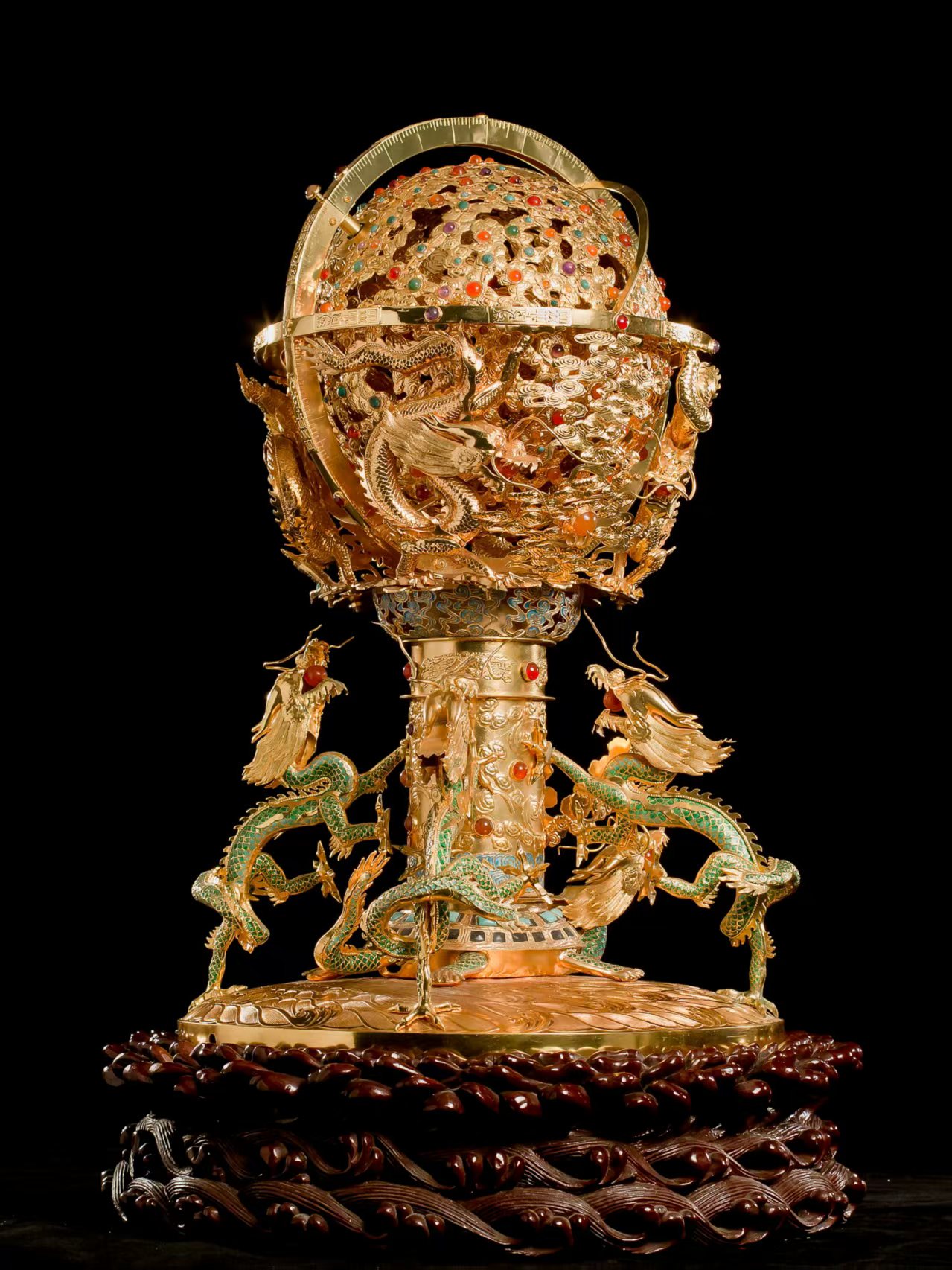

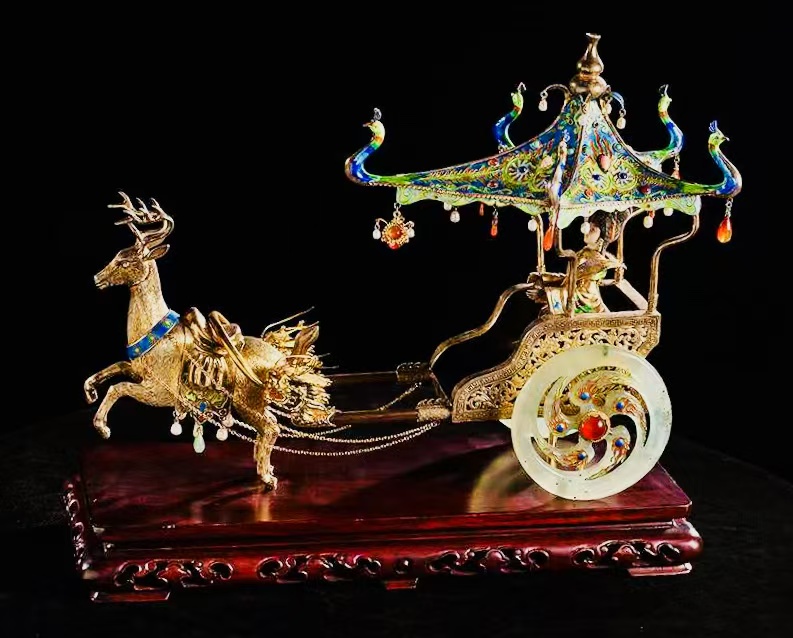


About the author
New Integration of Opera Rhyme, Drama, Peking Opera, Parade, Intangible Cultural Heritage, and Opera Performance
New style Peking Opera integrates modern performance forms.
lihao April 22, 2025
Liu Mingzhi, the inheritor of the Hundred Year Intangible Cultural Heritage Dehua Porcelain Project
Liu Mingzhi, a representative inheritor of Dehua porcelain firing techniques at the municipal level, was born in Dehua, the porcelain capital of China, in 1973. He is a master of traditional Chinese arts and crafts, a senior arts and crafts artist, a senior ceramic sculpture technician, and a national first-class artist. He grew up in Tuban Village, Xunzhong Town, Dehua County. This village is surrounded by mountains on both sides and water on the other side, with fresh air and beautiful scenery. In his childhood, painting in the green mountains and water and kneading clay with rare earths became a great pleasure in his life, which had a profound impact on his path towards porcelain carving art Liu Mingzhi's career began in 1990, when he graduated from high school and entered the century old folk brand "Yunyu Porcelain Village" in […]
lihao April 22, 2025
Master of Intangible Cultural Heritage Kiln Construction – Sun Jianxing
Jian Kiln, one of the famous kilns of the Song Dynasty, also known as "Jian'an Kiln" and "Wuni Kiln", is distributed in Jianyang Shuiji Kiln, Nanping Chayang Kiln, and Mount Wuyi Yulingting Kiln. The three kiln sites are collectively called Jian Kiln System. Famous for firing black glazed porcelain. Small bowls are the most common, with black mud colored fetal bones and multiple strip-shaped crystal patterns on the glaze surface, as fine as rabbit hair, known as "rabbit hair cups". There are also those that are burned into "Partridge Spots" and "Silver Star Spots", which are unique and beautiful. Underglaze grain is a decoration made by using the acidic traces formed by acidic glaze materials. Due to the upward firing of kiln ceramics, the glaze water hangs down, and the finished glaze color at the mouth edge is light. Due […]
lihao April 22, 2025
Master of Intangible Cultural Heritage Huimo – Zhou Meihong
Huimo The mellow smoke is refined for a long time, like a hammer in a pestle and mortar. Ink is one of the cultural genes engraved in the blood of China. Chinese literati often refer to themselves as "ink masters" and their works as "ink marks". The phrase "those who have good ink are like famous generals who have good horses" expresses the importance attached to ink. The world's ink industry is led by Huizhou ink. As one of the Four Treasures of Chinese Literature, Huizhou ink is light to pick, clear to grind, fragrant to smell, as strong as jade, and silent to study. When written on paper, a little bit is like lacquer, and it has been preserved for thousands of years. Throughout history, literati and ink masters have regarded it as a beloved object. Tracing back to […]
lihao April 22, 2025
Liu Zhongping, the inheritor of the centennial intangible cultural heritage woodblock New Year paintings
Woodblock New Year paintings are a traditional folk art form with a long history in China, spanning over a thousand years. It originated during the Wanli period of the Ming Dynasty, initially rising in the northern plains of Beijing, Tianjin, and other places, and later spreading to southern regions such as Shanghai, Suzhou, Hangzhou, and so on. Woodblock New Year paintings reached their peak in the mid to late Qing Dynasty, becoming decorative items for festivals and reflecting the rich content of Chinese folk society. Woodblock New Year paintings are made on wooden boards through manual carving and printing. The content usually includes images of gods, immortals, Buddhas, old events, folk customs, nature, animals and plants, as well as auspicious words and blessings. Its artistic style is strong and atmospheric, with extremely high historical and artistic value. Woodblock New […]
lihao April 22, 2025
Zhao Jin Baizhi, the fourth generation inheritor of the century old intangible cultural heritage of Beijing embroidery
Jing embroidery, also known as palace embroidery, is a traditional embroidery technique in ancient Chinese courts with a long history. It originated in the Tang Dynasty, flourished during the Song and Liao dynasties, and reached its peak in the Ming and Qing dynasties. Jing embroidery, with its exquisite skills and unique aesthetic style, has become one of the Eight Wonders of Yanjing. Especially in the Qing Dynasty, Jing embroidery was widely used in palace costumes and decorations, demonstrating high artistic value and cultural connotations. Beijing Embroidery has a variety of stitches, inheriting the essence of Suzhou Embroidery and other skills, including Qi stitch, Wo stitch, and set stitch. The combination of these stitches can produce rich lines and patterns, showing unique artistic effects. Its color application is exquisite, with five colors as its characteristic, emphasizing the coordination and unity between […]
lihao April 22, 2025
Related
Liu Mingzhi, the inheritor of the Hundred Year Intangible Cultural Heritage Dehua Porcelain Project
Liu Mingzhi, a representative inheritor of Dehua porcelain firing techniques at the municipal level, was born in Dehua, the porcelain capital of China, in 1973. He is a master of traditional Chinese arts and crafts, a senior arts and crafts artist, a senior ceramic sculpture technician, and a national first-class artist. He grew up in Tuban Village, Xunzhong Town, Dehua County. This village is surrounded by mountains on both sides and water on the other side, with fresh air and beautiful scenery. In his childhood, painting in the green mountains and water and kneading clay with rare earths became a great pleasure in his life, which had a profound impact on his path towards porcelain carving art Liu Mingzhi's career began in 1990, when he graduated from high school and entered the century old folk brand "Yunyu Porcelain Village" in […]
lihao April 22, 2025
Master of Intangible Cultural Heritage Kiln Construction – Sun Jianxing
Jian Kiln, one of the famous kilns of the Song Dynasty, also known as "Jian'an Kiln" and "Wuni Kiln", is distributed in Jianyang Shuiji Kiln, Nanping Chayang Kiln, and Mount Wuyi Yulingting Kiln. The three kiln sites are collectively called Jian Kiln System. Famous for firing black glazed porcelain. Small bowls are the most common, with black mud colored fetal bones and multiple strip-shaped crystal patterns on the glaze surface, as fine as rabbit hair, known as "rabbit hair cups". There are also those that are burned into "Partridge Spots" and "Silver Star Spots", which are unique and beautiful. Underglaze grain is a decoration made by using the acidic traces formed by acidic glaze materials. Due to the upward firing of kiln ceramics, the glaze water hangs down, and the finished glaze color at the mouth edge is light. Due […]
lihao April 22, 2025
Master of Intangible Cultural Heritage Huimo – Zhou Meihong
Huimo The mellow smoke is refined for a long time, like a hammer in a pestle and mortar. Ink is one of the cultural genes engraved in the blood of China. Chinese literati often refer to themselves as "ink masters" and their works as "ink marks". The phrase "those who have good ink are like famous generals who have good horses" expresses the importance attached to ink. The world's ink industry is led by Huizhou ink. As one of the Four Treasures of Chinese Literature, Huizhou ink is light to pick, clear to grind, fragrant to smell, as strong as jade, and silent to study. When written on paper, a little bit is like lacquer, and it has been preserved for thousands of years. Throughout history, literati and ink masters have regarded it as a beloved object. Tracing back to […]
lihao April 22, 2025
Liu Zhongping, the inheritor of the centennial intangible cultural heritage woodblock New Year paintings
Woodblock New Year paintings are a traditional folk art form with a long history in China, spanning over a thousand years. It originated during the Wanli period of the Ming Dynasty, initially rising in the northern plains of Beijing, Tianjin, and other places, and later spreading to southern regions such as Shanghai, Suzhou, Hangzhou, and so on. Woodblock New Year paintings reached their peak in the mid to late Qing Dynasty, becoming decorative items for festivals and reflecting the rich content of Chinese folk society. Woodblock New Year paintings are made on wooden boards through manual carving and printing. The content usually includes images of gods, immortals, Buddhas, old events, folk customs, nature, animals and plants, as well as auspicious words and blessings. Its artistic style is strong and atmospheric, with extremely high historical and artistic value. Woodblock New […]
lihao April 22, 2025
Zhao Jin Baizhi, the fourth generation inheritor of the century old intangible cultural heritage of Beijing embroidery
Jing embroidery, also known as palace embroidery, is a traditional embroidery technique in ancient Chinese courts with a long history. It originated in the Tang Dynasty, flourished during the Song and Liao dynasties, and reached its peak in the Ming and Qing dynasties. Jing embroidery, with its exquisite skills and unique aesthetic style, has become one of the Eight Wonders of Yanjing. Especially in the Qing Dynasty, Jing embroidery was widely used in palace costumes and decorations, demonstrating high artistic value and cultural connotations. Beijing Embroidery has a variety of stitches, inheriting the essence of Suzhou Embroidery and other skills, including Qi stitch, Wo stitch, and set stitch. The combination of these stitches can produce rich lines and patterns, showing unique artistic effects. Its color application is exquisite, with five colors as its characteristic, emphasizing the coordination and unity between […]
lihao April 22, 2025
Master Xu Jianping, a century old intangible cultural heritage redwood master
Master Xu Jianping Representative inheritors of Ming style furniture production techniques for the first batch of national intangible cultural heritage projects Master of Arts and Crafts in Jiangsu Province In 1999, he served as the chief designer and producer of the restoration of the Hong Xiuquan Heavenly Palace at the Nanjing Modern History Site Museum (inside the Nanjing Presidential Palace), which is a national key cultural relic protection unit. In 2000, served as the chief designer and producer of the restoration of the Manchurian Imperial Palace in Changchun (a national key cultural relic protection unit). In 2000, served as the chief designer and producer of the restoration of Hu Xueyan's former residence in Hangzhou (a cultural relic protection unit in Zhejiang Province). In 2001, served as the chief designer and producer of the restoration of Wenzhou Ruyuan (a cultural relic […]
lihao April 22, 2025


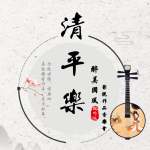


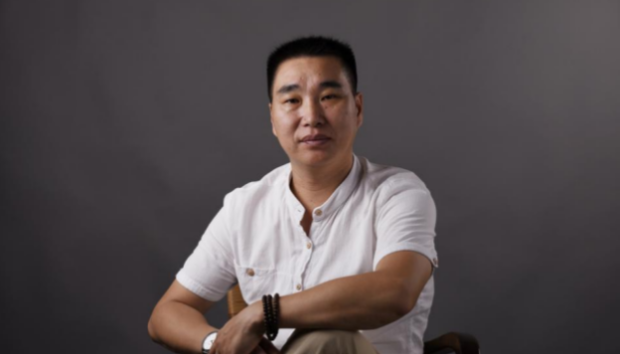


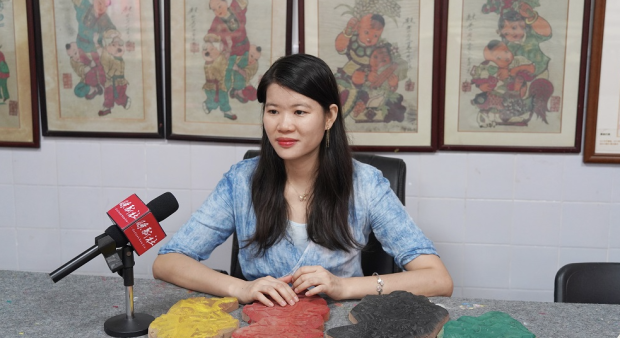

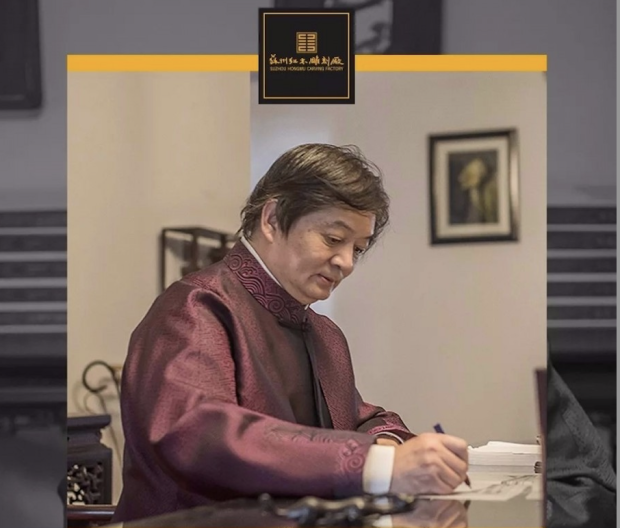

Be the first to leave a comment